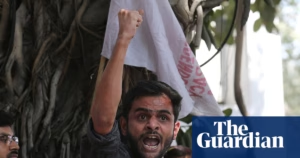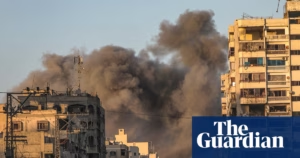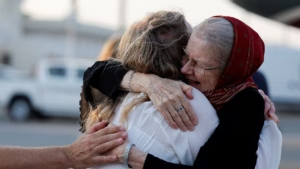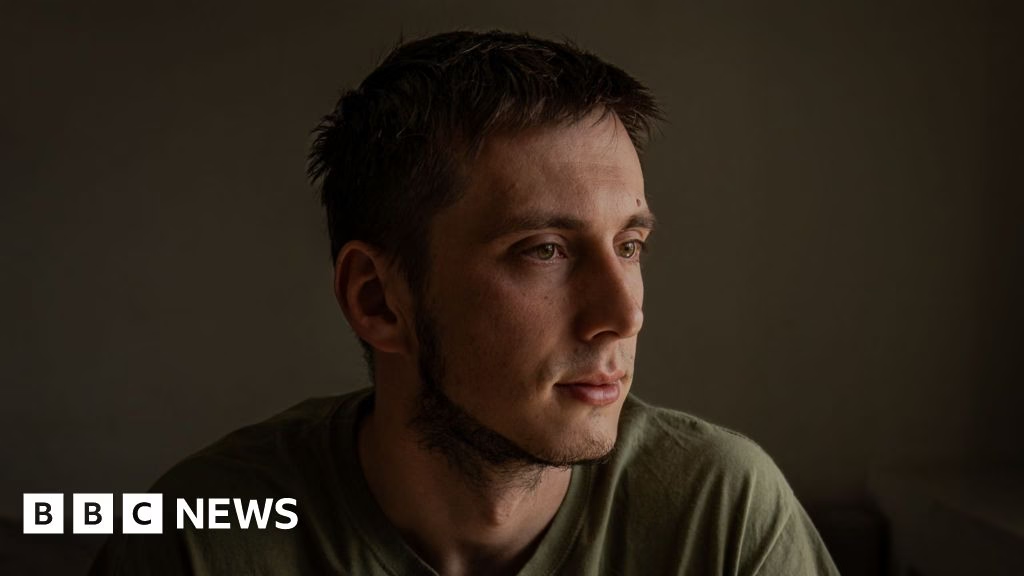/(cpsprodpb)(9b82|live)/0c4174b0-6e0a-11f0-8dbd-f3d32ebd3327.jpg.webp) BBC
BBCIn a cramped apartment in the Ukrainian capital Kyiv, Pavlo, a 30-year-old drone operator who had recently returned from the front, unzipped a black case about the size of a pizza box. Inside, there was a four-rotor drone he intended to fly around the room.
He pressed buttons on the control unit and pushed the antenna to different positions. Nothing happened. “Sorry, not today,” he said, with a smile. The unit looked fine, but something was broken.
At the front, Pavlo, who asked to be identified only by his first name, was a pilot of first-person view (FPV) drones. These small, highly manoeuvrable drones have front-facing cameras that allow them to be flown remotely. Over the past year or so, bomb-laden FPVs have become ubiquitous on the frontlines in Ukraine, replacing the heavy weapons that characterised the war’s first phase.
The FPVs chase armoured vehicles, hunt infantry units through treelines and stalk individual soldiers to their deaths. “You cannot hide from the FPV, and to run is useless,” Pavlo said. “You try to be as calm as possible, and you pray.”
Even when an FPV is too high to see clearly, or hidden behind foliage, soldiers can hear its distinctive, high-pitched whine.
“Bzzzzzzzzzzzz,” Pavlo said. “You are being hunted.”
After more than a year at the front, Pavlo has returned home to the Kyiv apartment he shares with his wife. But the sound of the drones has followed him. Everyday mechanical tools like lawnmowers, motorcycles and air conditioners remind him of the FPVs that hunted him and his unit mates.
And nature is not an escape. Pavlo can no longer hear the sound of bees and flies buzzing near him without a creeping panic. “I don’t like to go into nature anymore and hear this sound, because it reminds me so hard of the drones,” he said.
Trauma associated with sound is not new – generations of soldiers have been affected by sudden noises after returning to civilian life. But as the war in Ukraine has evolved into a conflict driven by drone technology, the trauma has evolved with it.
“Over the past year, the majority of patients – if they are not physically wounded – have mental health injuries as a result of being under drone activity,” said Dr Serhii Andriichenko, chief psychiatrist at Kyiv’s military hospital. “We call this droneophobia.”
Many thousands of men are now returning from the front like Pavlo, with acute stress disorders associated with the sounds of drones, Dr Andriichenko said. The droneophobia can be triggered by an array of ordinary urban sounds – small motorcycles and scooters, lawnmowers, air conditioners – anything mechanical that whirrs.
“If it’s a moped or a lawnmower, my first thought is that it might be a drone,” said another returned frontline soldier, Savur, who lost his arm in an FPV drone attack.
At the front line the drones were a “permanent sound”, said Savur, who in accordance with military protocol asked to be identified by his callsign. “The sound of a shell lasts just a few seconds, but the sound of the drone is there most of the time,” he said.
“You can lay in your position, in your foxhole, and listen to it for hours. I remember that sound all of the time.”
Or sometimes the problem was the opposite – silence. “Silence is always the start,” Dr Andrizenko, the psychiatrist, said. “When the soldiers go on rotation to combat positions, they start listening carefully to make sure there are no drones. There is constant tension, constant fear. They are always looking up.”
In many cases, that constant sense of tension has not been dispelled by the return to civilian life. Soldiers have been observed suddenly switching off lights at home, moving away from windows and hiding under furniture.
Later, if a soldier is seen for treatment, Dr Andrizenko describes how he often has no memory of any trigger sound, but his wife or family member will reveal that an extractor fan or air conditioner had just been turned on.
Soldiers from the earlier phases of the war – which was characterised more by brutal, direct combat – came home fearful of being in forests, where much of the fighting had taken place. But drone warfare has reversed the phenomenon. Now soldiers “feel safest in forests, under dense tree canopies”, the psychiatrist said. “And in their free time, they try to avoid wooded areas.”
The rise in drone use has had another terrorising effect for combat troops – it has extended the danger zone far back from the front line. Soldiers operating up to 40km (25 miles) away, or pulling back after a heavy rotation, can no longer let their guard down.
Nazar Ookhoii, a commander of a small drone unit, was about 5km from the contact line in a dugout one day when his unit scored a direct hit on a Russian mortar position 22km away. Buoyed by the success, Ookhoii bounded out of the dugout, forgetting the usual protocol of stopping first to listen for a telltale buzz.
Metres away, a Russian FPV was loitering in the air. As it sped towards him, Ookhoii only had time to raise his arms. When it detonated, it took both his hands and his left eye and badly burned his face.
/cpsprodpb(7fe6|live)(|34acc04c0d55).webp )
Ookhoii’s own PTSD was limited, he said, to an occasional fear response to motorcycles and lawnmowers. But he knew about the effect of the sound, he said, because his unit had used it to inflict terror on others.
“We were the side that caused fear with sound, not the side that suffered from it,” Ookhoii said.
They had realised at some point that the sound could be used to force Russian soldiers into exposed areas. “You buzz around them and it becomes a test of the enemy’s psychological resilience,” Ookhoii said. “The sound of the drone itself is a serious psychological attack.”
According to Ookhoii, buzz above a soldier for long enough and he will leave a strong shelter and simply run into open terrain. “Our psychology works in such a way that we need to do something to calm ourselves,” Ookhoii said. “So you hover nearby and psychologically suppress him… and he starts running and becomes easier to hit.”
And the psychological terror of the FPV is no longer just a problem on the front line. It has reached beyond even the areas behind the front lines. Russia has begun using FPVs to drop munitions on civilians in Ukrainian cities nearby.
Among the worst hit is Kherson, a southern city occupied for a time by Russian forces and still comfortably within drone range. According to Human Rights Watch, Russian forces have deliberately targeted civilians in the city with FPV drones and killed or maimed them – a war crime.
According to the regional military administration, at least 84 civilians have been killed in the Kherson region as a result of Russian drone attacks so far this year.
Residents say the tiny FPVs are a daily terror.
“There is no such thing as a safe place anymore,” said Stepan Platov, a 23-year-old police officer who lives in Kherson city. “You always have to be alert, focused, and because of that, the body is constantly under stress,” he said.
Potrov’s attack came as he headed to buy bread. A Russian drone buzzed overhead, and he instinctively raised his hands. When it detonated, both his hands were severely injured, leaving him unable to feel the touch of his coffee cup ever again.
For Potrov and many civilians like him, the drones have transformed common sounds into psychological traps. Power tools, motorcycles, or just the hum of distant traffic can trigger memories of terror. Even when they’re safe, they can’t shake the fear, Potrov said.
“I feel powerless every time I hear a drone. It feels like I’m back there again, all the pain and panic come flooding back,” Potrov told The Sunday Times.
Many say the constant drone activity has dramatically changed their way of life – once bustling markets now empty, the shy glimpses of children across the streets, and the muffled sounds of mothers calling their children.
As the conflict continues to evolve, Potrov hopes for a future where drones are no longer the instruments of terror, but instead tools for peace and reconstruction. He believes that until then, the community will have to find ways to live with this new everyday reality, and support each other in their struggle to overcome the trauma.
Source: https://www.bbc.com/news/articles/c23gjk7dlvlo?at_medium=RSS&at_campaign=rss












